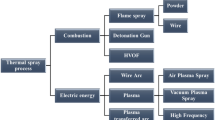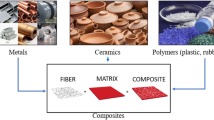Abstract
Polymers based on silicon make excellent materials for coating applications in industrial sectors, manufacturing, energy sector, transportation, waste remediation, nuclear, space, etc. Coatings that withstand high temperatures offer compatibility with the environment as well as substrates play a crucial role. Strong adherence to the majority of surfaces, as well as good chemical, thermal and UV resistance, are only a few of these compounds’ outstanding qualities. In some situations, chemical processes or radiation can also be used to turn them into ceramic materials, in addition to heat treatment. Since they were first used in specialised, high-performance coatings, silicon-based technologies have become widely used in the coatings sector along with solar applications, functional qualities and high-temperature stability are also required for coatings. The current chapter examines several silicon-based technology high-temperature applications and corrosion mitigation where coatings play a crucial role and the parameters influencing their selection and processing step have been elaborated. Components that run at extremely high temperatures, such as gas turbines, jet engines and industrial plants, are subject to a phenomenon known as high-temperature corrosion. Every aspect of our existence is affected by corrosion, including buildings, bridges, utilities, as well as automobiles, trains and other moving vehicles. A crucial method of corrosion mitigation is coating. In most cases, corrosion happens when conductive ions, water and oxygen form an electrochemical cell on the metal surface. The formulator can lengthen the lifespan of the coated object and increase the longevity of a paint layer by limiting the penetration of these corrosion-causing substances. More formulators are able to meet stringent application requirements thanks to customised chemistries and efficient performance. This chapter examines the range of silicon-based technologies and the recent upsurge in silicon-based products. This chapter ends by discussing new surveys on coating qualities, providing advice to coatings formulators on how to employ silicon-based technology to improve their products and discussing the application of silicon-based coating to protect metallic alloys from high temperatures.
Access this chapter
Tax calculation will be finalised at checkout
Purchases are for personal use only
Similar content being viewed by others
Abbreviations
- EBCs:
-
Environmental Barrier Coatings
- CVD:
-
Chemical Vapour Deposition
- SBT:
-
Silicon-Based Technology
- PVD:
-
Physical Vapour Deposition
References
Colombo, P., Mera, G., Riedel, R., Soraru, G.D.: Polymer‐derived ceramics: 40 years of research and innovation in advanced ceramics. Ceram. Sci. Technol. 245–320 (2013)
Plueddemann, E.P.: Silane adhesion promoters in coatings. Prog. Org. Coat. 11(3), 297–308 (1983)
Aegerter, M.A., Mennig, M., (eds.): Sol-Gel Technologies for Glass Producers and Users. Springer Science & Business Media (2013)
Colombo, P., (ed.): Polymer Derived Ceramics: from Nano-Structure to Applications. DEStech Publications Inc. (2010)
Stern, K.H., (ed.): Metallurgical and Ceramic Protective Coatings. Springer Science & Business Media (1996)
Al-Asadi, M.M.. Al-Tameemi, H.A.: A review of tribological properties and deposition methods for selected hard protective coatings. Tribol. Int. 107919 (2022)
Brinker, C.J.: Dip coating. In: Chemical Solution Deposition of Functional Oxide Thin Films, pp. 233–261 (2013)
Yimsiri, P., Mackley, M.R.: Spin and dip coating of light-emitting polymer solutions: matching experiment with modelling. Chem. Eng. Sci. 61(11), 3496–3505 (2006)
Aegerter, M.A., Puetz, J., Gasparro, G., Al-Dahoudi, N.: Versatile wet deposition techniques for functional oxide coatings. Opt. Mater. 26(2), 155–162 (2004)
Krebs, F.C.: Fabrication and processing of polymer solar cells: a review of printing and coating techniques. Sol. Energy Mater. Sol. Cells 93(4), 394–412 (2009)
Norrman, K., Ghanbari-Siahkali, A., Larsen, N.B.: 6 Studies of spin-coated polymer films. Ann. Rep. Sect. “C” (Phys. Chem.) 101, 174–201 (2005)
Barroso, G., Li, Q., Bordia, R.K., Motz, G.: Polymeric and ceramic silicon-based coatings—A review. J. Mater. Chem. A 7(5), 1936–1963 (2019)
Labrousse, M., Nanot, M., Boch, P., Chassagneux, E.: Ex-polymer SiC coatings with Al2O3 particulates as filler materials. Ceram. Int. 19(4), 259–267 (1993)
Wiley, J., Sons.: Processing and Finishing of Polymeric Materials, 2 Volume Set. John Wiley & Sons (2011)
Ichiki, M., Zhang, L., Yang, Z., Ikehara, T., Maeda, R.: Thin film formation on non-planar surface with use of spray coating fabrication. Microsyst. Technol. 10, 360–363 (2004)
Girotto, C., Rand, B.P., Genoe, J., Heremans, P.: Exploring spray coating as a deposition technique for the fabrication of solution-processed solar cells. Sol. Energy Mater. Sol. Cells 93(4), 454–458 (2009)
Greil, P.: Polymer derived engineering ceramics. Adv. Eng. Mater. 2(6), 339–348 (2000)
Riedel, R., Mera, G., Hauser, R., Klonczynski, A.: Silicon-based polymer-derived ceramics: synthesis properties and applications-a review. J. Ceram. Soc. Jpn. 114(1330), 425–444 (2006)
Bill, J., Aldinger, F.: Precursor-derived covalent ceramics. Adv. Mater. 7(9), 775–787 (1995)
Neumann, T.V., Kara, B., Sargolzaeiaval, Y., Im, S., Ma, J., Yang, J., Ozturk, M.C., Dickey, M.D.:Aerosol spray deposition of liquid metal and elastomer coatings for rapid processing of stretchable electronics. Micromachines 12, 146 (2021)
Chantrell, P.G., Popper, P.: Inorganic polymers and ceramics. Special Ceram. 67 (1965)
Schwartz, K.B., Rowcliffe, D.J.: Modeling density contributions in preceramic polymer/ceramic powder systems. J. Am. Ceram. Soc. 69(5), C-106 (1986)
Barroso, G.S., Krenkel, W., Motz, G.: Low thermal conductivity coating system for application up to 1000 C by simple PDC processing with active and passive fillers. J. Eur. Ceram. Soc. 35(12), 3339–3348 (2015)
Zhu, Y., Hou, G., Wang, Q., Zhu, T., Sun, T., Xu, J., Chen, K.: Silicon-based spectrally selective emitters with good high-temperature stability on stepped metasurfaces. Nanoscale 14(30), 10816–10822 (2022)
Greil, P.: Near net shape manufacturing of polymer derived ceramics. J. Eur. Ceram. Soc. 18(13), 1905–1914 (1998)
Hennige, V.D., Hauβelt, J., Ritzhaupt-Kleissl, H.J., Windmann, T.: Shrinkage-free ZrSiO4-ceramics: characterisation and applications. J. Eur. Ceram. Soc. 19(16), 2901–2908 (1999)
Leite, M.L., Barroso, G., Parchovianský, M., Galusek, D., Ionescu, E., Krenkel, W., Motz, G.: Synthesis and characterization of yttrium and ytterbium silicates from their oxides and an oligosilazane by the PDC route for coating applications to protect Si3N4 in hot gas environments. J. Eur. Ceram. Soc. 37(16), 5177–5191 (2017)
Torrey, J.D., Bordia, R.K., Henager, C.H., Blum, Y., Shin, Y., Samuels, W.D.: Composite polymer derived ceramic system for oxidizing environments. J. Mater. Sci. 41, 4617–4622 (2006)
Torrey, J.D., Bordia, R.K.: Processing of polymer-derived ceramic composite coatings on steel. J. Am. Ceram. Soc. 91(1), 41–45 (2008)
Wang, K., Günthner, M., Motz, G., Bordia, R.K.: High performance environmental barrier coatings, Part II: active filler loaded SiOC system for superalloys. J. Eur. Ceram. Soc. 31(15), 3011–3020 (2011)
Bai, J., Maute, K., Shah, S.R., Raj, R.: Mechanical design for accommodating thermal expansion mismatch in multilayer coatings for environmental protection at ultrahigh temperatures. J. Am. Ceram. Soc. 90(1), 170–176 (2007)
Picard, L., Phalip, P., Fleury, E., Ganachaud, F.: Chemical adhesion of silicone elastomers on primed metal surfaces: a comprehensive survey of open and patent literatures. Prog. Org. Coat. 80, 120–141 (2015)
Hou, G., Lin, Z., Wang, Q., Zhu, Y., Xu, J., Chen, K.: Integrated silicon-based spectral reshaping intermediate structures for high performance solar thermophotovoltaics. Sol. Energy 249, 227–232 (2023)
Van Ooij, W.J., Zhu, D.Q., Prasad, G., Jayaseelan, S., Fu, Y., Teredesai, N.: Silane based chromate replacements for corrosion control, paint adhesion, and rubber bonding. Surf. Eng. 16(5), 386–396 (2000)
Amouzou, D., Fourdrinier, L., Maseri, F., Sporken, R.: Formation of Me–O–Si covalent bonds at the interface between polysilazane and stainless steel. Appl. Surf. Sci. 320, 519–523 (2014)
Rouzmeh, S.S., Naderi, R., Mahdavian, M.: Steel surface treatment with three different acid solutions and its effect on the protective properties of the subsequent silane coating. Prog. Org. Coat. 112, 133–140 (2017)
Muir, B.W., Thissen, H., Simon, G.P., Murphy, P.J., Griesser, H.J.: Factors affecting the adhesion of microwave plasma deposited siloxane films on polycarbonate. Thin Solid Films 500(1–2), 34–40 (2006)
Hussain, B., Ebong, A., Ferguson, I.: Zinc oxide as an active n-layer and antireflection coating for silicon based heterojunction solar cell. Sol. Energy Mater. Sol. Cells 139, 95–100 (2015)
Bertaux, E., Le Marec, E., Crespy, D., Rossi, R., Hegemann, D.: Effects of siloxane plasma coating on the frictional properties of polyester and polyamide fabrics. Surf. Coat. Technol. 204(1–2), 165–171 (2009)
Boutamine, M., Bellel, A., Sahli, S., Segui, Y., Raynaud, P.: Hexamethyldisiloxane thin films as sensitive coating for quartz crystal microbalance based volatile organic compounds sensors. Thin Solid Films 552, 196–203 (2014)
Mobarakeh, L.F., Jafari, R., Farzaneh, M.: The ice repellency of plasma polymerized hexamethyldisiloxane coating. Appl. Surf. Sci. 284, 459–463 (2013)
Marchand, D.J., Dilworth, Z.R., Stauffer, R.J., Hsiao, E., Kim, J.H., Kang, J.G., Kim, S.H.: Atmospheric rf plasma deposition of superhydrophobic coatings using tetramethylsilane precursor. Surf. Coat. Technol. 234, 14–20 (2013)
Ramamoorthy, A., Rahman, M., Mooney, D.A., MacElroy, J.D., Dowling, D.P.: Thermal stability studies of atmospheric plasma deposited siloxane films deposited on Vycor™ glass. Surf. Coat. Technol. 202(17), 4130–4136 (2008)
Tanaka, T., Hanaoka, K., Yamaguchi, M., Shindo, T., Kunzelmann, K.H., Teranaka, T.: Silica film coating method for veneering resin composite. Dent. Mater. J. 30(2), 170–175 (2011)
Duran, S.S.F., Zhang, D., Lim, W.Y.S., Cao, J., Liu, H., Zhu, Q., Tan, C.K.I., Xu, J., Loh, X.J., Suwardi, A.: Potential of recycled silicon and silicon-based thermoelectrics for power generation. Crystals 12(3), 307 (2022)
Marceaux, S., Bressy, C., Perrin, F.X., Martin, C., Margaillan, A.: Development of polyorganosilazane–silicone marine coatings. Prog. Org. Coat. 77(11), 1919–1928 (2014)
Morlier, A., Cros, S., Garandet, J.P., Alberola, N.: Structural properties of ultraviolet cured polysilazane gas barrier layers on polymer substrates. Thin Solid Films 550, 85–89 (2014)
Bauer, F., Decker, U., Dierdorf, A., Ernst, H., Heller, R., Liebe, H., Mehnert, R.: Preparation of moisture curable polysilazane coatings: Part I. Elucidation of low temperature curing kinetics by FT-IR spectroscopy. Progr. Organ. Coat. 53(3), 183–190 (2005)
Müller, S., de Hazan, Y., Penner, D.: Effect of temperature, humidity and aminoalkoxysilane additive on the low temperature curing of polyorganosilazane coatings studied by IR spectroscopy, gravimetric and evolved gas analysis. Prog. Org. Coat. 97, 133–145 (2016)
Ammar, S., Ramesh, K., Vengadaesvaran, B., Ramesh, S., Arof, A.K.: Amelioration of anticorrosion and hydrophobic properties of epoxy/PDMS composite coatings containing nano ZnO particles. Prog. Org. Coat. 92, 54–65 (2016)
Kumar, S.A., Alagar, M., Mohan, V.: Studies on corrosion-resistant behavior of siliconized epoxy interpenetrating coatings over mild steel surface by electrochemical methods. J. Mater. Eng. Perform. 11, 123–129 (2002)
Canosa, G., Alfieri, P.V., Giudice, C.A.: High-solids, one-coat paints based on aliphatic epoxy resin-siloxanes for steel protection. Prog. Org. Coat. 77(9), 1459–1464 (2014)
Ribeiro, L.F.B., Flores, O., Furtat, P., Gervais, C., Kempe, R., Machado, R.A., Motz, G.: A novel PAN/silazane hybrid polymer for processing of carbon-based fibres with extraordinary oxidation resistance. J. Mater. Chem. A 5(2), 720–729 (2017)
Lampert, F., Jensen, A.H., Din, R.U., Møller, P.: Hydrogen Silsesquioxane based silica glass coatings for the corrosion protection of austenitic stainless steel. Surf. Coat. Technol. 307, 879–885 (2016)
Tiwari, A., Hihara, L.H.: High performance reaction-induced quasi-ceramic silicone conversion coating for corrosion protection of aluminium alloys. Prog. Org. Coat. 69(1), 16–25 (2010)
Zhou, L., Lv, G.H., Ji, C., Yang, S.Z.: Application of plasma polymerized siloxane films for the corrosion protection of titanium alloy. Thin Solid Films 520(7), 2505–2509 (2012)
Akuzov, D., Vladkova, T., Zamfirova, G., Gaydarov, V., Nascimento, M.V., Szeglat, N., Grunwald, I.: Polydimethyl siloxane coatings with superior antibiofouling efficiency in laboratory and marine conditions. Prog. Org. Coat. 103, 126–134 (2017)
Arukalam, I.O., Oguzie, E.E., Li, Y.: Fabrication of FDTS-modified PDMS-ZnO nanocomposite hydrophobic coating with anti-fouling capability for corrosion protection of Q235 steel. J. Colloid Interface Sci. 484, 220–228 (2016)
Acknowledgements
It is my proud privilege and special appreciation towards my supervisor, Dr. Sudesh Kumar, professor of Chemistry, Banasthali Vidyapeeth, Department of Chemistry, Rajasthan, under his guidance for his keen enthusiastic interest and valuable guidance which made it possible to complete this work.
Author information
Authors and Affiliations
Corresponding author
Editor information
Editors and Affiliations
Ethics declarations
Conflict of Interest
We have no conflict of interest.
Rights and permissions
Copyright information
© 2024 The Author(s), under exclusive license to Springer Nature Switzerland AG
About this chapter
Cite this chapter
Sati, P., Kumari, A., Kumar, S. (2024). Silicon-Based Technologies for High-Temperature Coatings and Their Corrosion Behaviours. In: Pakseresht, A., Amirtharaj Mosas, K.K. (eds) Coatings for High-Temperature Environments. Engineering Materials. Springer, Cham. https://doi.org/10.1007/978-3-031-45534-6_5
Download citation
DOI: https://doi.org/10.1007/978-3-031-45534-6_5
Published:
Publisher Name: Springer, Cham
Print ISBN: 978-3-031-45533-9
Online ISBN: 978-3-031-45534-6
eBook Packages: Chemistry and Materials ScienceChemistry and Material Science (R0)




